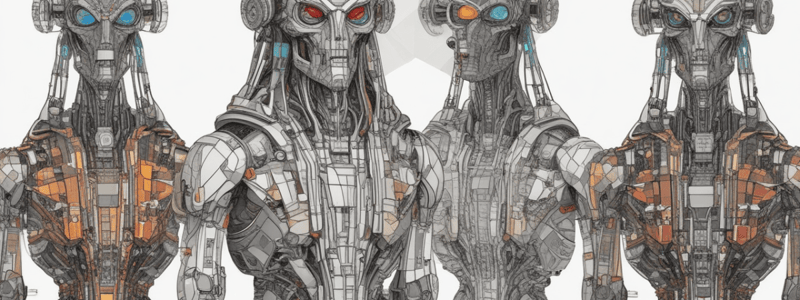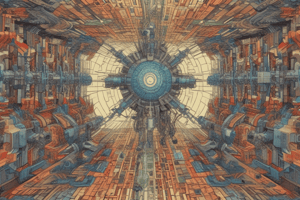Podcast
Questions and Answers
What is the name of the new model discussed in the text?
What is the name of the new model discussed in the text?
- InnovaGen
- Transformer Prime
- Visionary
- Muse (correct)
Why is text considered a natural control mechanism for image generation?
Why is text considered a natural control mechanism for image generation?
- Text always produces realistic images
- Text allows non-experts to generate images (correct)
- It requires less computational power
- Images cannot be generated without text input
What is one major advantage of using text as a control mechanism for image generation?
What is one major advantage of using text as a control mechanism for image generation?
- Images generated with text do not need editing
- It requires less training data
- It enables expression of thoughts and ideas (correct)
- It always prevents biases in the generated images
Why is collecting large-scale paired image-text data more feasible for deep learning?
Why is collecting large-scale paired image-text data more feasible for deep learning?
What important research problem is highlighted regarding the existing image-text datasets?
What important research problem is highlighted regarding the existing image-text datasets?
How do large language models contribute to the effectiveness of the text-to-image generation models?
How do large language models contribute to the effectiveness of the text-to-image generation models?
What type of semantic concepts can Large Language Models (LLMs) translate to output images?
What type of semantic concepts can Large Language Models (LLMs) translate to output images?
Which model was one of the first diffusion models built on pre-trained CLIP representations?
Which model was one of the first diffusion models built on pre-trained CLIP representations?
What is an example of a large-scale model from Google mentioned in the text?
What is an example of a large-scale model from Google mentioned in the text?
Which model is described as an auto-regressive model on latent token space?
Which model is described as an auto-regressive model on latent token space?
What is the purpose of the tool called 'Dream Booth' mentioned in the text?
What is the purpose of the tool called 'Dream Booth' mentioned in the text?
In the context of the text, what does 'CLIP' likely refer to?
In the context of the text, what does 'CLIP' likely refer to?
Study Notes
Text-to-Image Generation
- Text-to-image generation has advanced significantly in the last year or two.
- Text is a natural control mechanism for generation, allowing non-experts to express creative ideas and generate compelling images.
Advantages of Text-to-Image Generation
- Deep learning requires large amounts of data, which is more feasible to collect for paired image-text data.
- Models can exploit pre-trained large language models, which provide fine-grained understanding of text (parts of speech, nouns, verbs, adjectives).
- Large language models can be pre-trained on various text tasks with orders of magnitude of larger text data.
State of the Art
- DALL-E 2 from Open AI is a diffusion model built on pre-trained CLIP representations.
- Imagine from Google is a diffusion model built on pre-trained large language models.
- Party from Google is an auto-regressive model on latent token space.
- Stable diffusion from Stability AI is a diffusion model on latent embeddings.
Model Comparison
- MUSE is a new model for text-to-image generation via masked generative transformers.
- A comparison of DALL-E, Imagine, and MUSE models on a particular text prompt reveals pros and cons of each model.
Image Editing Applications
- Personalization: Dream Booth, a tool built on these models, allows for personalized image editing.
- Image editing applications can be built on these models, enabling users to create and iterate on their own personal art and ideas.
Studying That Suits You
Use AI to generate personalized quizzes and flashcards to suit your learning preferences.
Description
Test your knowledge on the new model for text-to-image generation called 'Muse', presented in a research paper by Google Research scientists. Explore how masked generative transformers are utilized in this cutting-edge technology.




